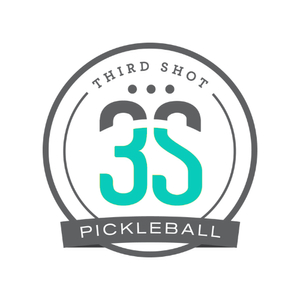Let’s face it, the sexy part of a pickleball shot is making contact with the ball; that fraction of a moment where the ball and the paddle come together to (hopefully) produce a magical result where the ball ends up exactly where it should. In all striking sports — games where players hit a ball with an implement like a racquet, stick, bat or paddle — announcers, camera operators and fans pay closest attention to the moment of contact and then what happens next (“Wow! Her ball landed just inside the line!”; “Look how great his drive was!”; “That ball had so much spin on it!”. It makes sense — contact and what happens next is the fun things to pay attention to!
But strong players know that this magical moment, the one that fires up the crowd and gets people on highlight reels, is only possible if the right preparation went into making it happen. As it is with any great final product, it is the work done in advance — the work that many people never see — that makes this outcome possible. That’s why I want to take a moment to talk about pickleball’s most under-appreciated technical skill — the set up.
Tyson McGuffin
This is a good example of the early preparation needed for solid, consistent contact.
The set up is what you do with your body and paddle as the ball is coming your way: where you move; how you move; the degree you turn your shoulders (or not); how you prepare your arm, wrist, hand and the paddle. All of this in combination is the set up. And how well you set up for the shot can spell the difference between hitting a winner that causes you to pump your fist, or making an error that makes you hang your head.
Since pickleball involves so many different kinds of shots, it makes sense that there are many different kinds of set up. How are you prepare for a return of serve, for example, is quite different from how you prepare for a volley. When hitting a return, we typically (though not always) stand in a sideways hitting position with the paddle well back to create sufficient speed to get the ball deep in the court. When volleying, however, the set up is much more compact since there is typically less time to get ready. Importantly, the stance for a volley is typically open, with the player facing forward so they don’t have a non-volley zone in fraction as they strike the ball.
Jay Devilliers
The set up includes what a player does with their body and paddle prior to contact.
The set up for an overhead smash is interesting since it could use an open stance but doesn’t always. If the lob is short, we tend to have a more open stance so we don’t find ourselves with one foot in the NVZ. A neutrals (sideways) stance is preferred if the player needs to move back for the ball. In either case, the paddle should be prepared up and back in a good throwing position, since this will increase the player’s ability to hit the ball hard.
Kaitlyn Christian
While most people pay attention to the end result, strong players know that good preparation is key.
Drops and dinks have a similar set up most of the time. Because these are softer shots, players don’t want a lot of backswing which will cause the ball to come fast off the paddle. In addition to the short backswing, the wrist should be laid back to allow for a forward impact point. Again we can see an open or a neutral stance used depending on the position on the court and the type of ball received.
At Picklebal Coaching International, we talk a lot about technical fundamentals. In fact we have a whole collection of videos highlighting these key technical skills as they pertain to different shots and situations. How players use their body and paddle matters. So while it’s always fun to think about the sexy part of pickleball, that fleeting moment of contact between the ball and the paddle, you would do well to give at least some attention to how you prepare for this critical instant.



